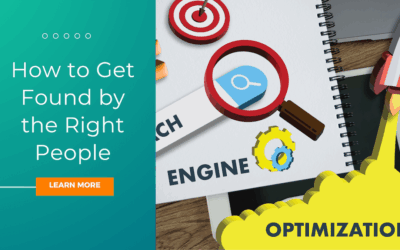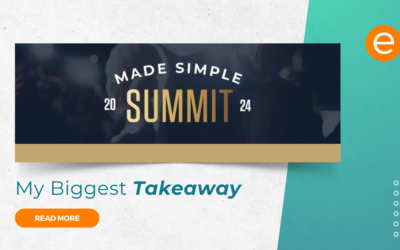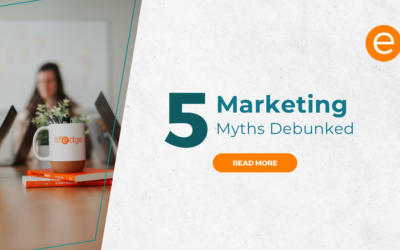Inbound or outbound marketing: what’s the difference, and which one should you focus on?
In the world of digital marketing, businesses are constantly searching for the best strategies to drive growth. Among the most debated topics are inbound and outbound marketing.
Both have their place, but one strategy stands out as the most effective: inbound marketing. Why? Let’s break it down.
What is inbound marketing?
Inbound marketing is all about attracting potential customers through relevant, helpful content. Rather than pushing a product or service onto the audience, you pull them in by offering value.
This could include blog posts, SEO, social media content, video marketing, and more. By providing answers to common questions or solving problems, inbound marketing creates trust and positions your company as an authority in your field.
Unlike traditional outbound marketing, where companies interrupt potential customers (e.g., TV ads, cold calls, or direct mail), inbound marketing creates a natural flow that attracts interested buyers when they’re ready.
What is outbound marketing?
Outbound marketing, on the other hand, involves pushing your message out to a broad audience. It includes tactics like TV ads, billboards, cold calls, or email blasts to purchased lists.
While outbound methods can still be effective, they often come across as intrusive, and the return on investment is hard to measure. In many cases, outbound strategies lead to low engagement as they disrupt people’s daily routines.
Inbound or outbound: which one is more effective?
The question isn’t just “inbound or outbound” — it’s about which one aligns best with your goals. In today’s digital landscape, inbound marketing often delivers superior results. Here’s why:
1. Higher engagement rates
Inbound marketing relies on content that speaks directly to the audience’s needs. With targeted SEO strategies, blog posts, and engaging social media campaigns, potential customers are more likely to engage when they seek solutions. They choose to consume your content, creating a more organic relationship.
In contrast, outbound marketing reaches people who may not be interested in what you’re selling, leading to lower engagement. For example, a cold call or a TV ad might interrupt someone’s day, but it doesn’t guarantee they’ll listen.
2. Better cost-effectiveness
Inbound marketing often yields higher returns with lower investment. Content creation, SEO, and social media campaigns typically cost less than paying for TV spots or advertising space. Over time, inbound methods also provide compounding returns, meaning you’ll continue to see benefits as your content ranks higher and attracts more leads.
Outbound marketing tends to be more costly, especially when you consider the price of advertising or hiring a team for cold calls. And, with outbound efforts, it’s harder to track and measure the exact ROI.
3. Long-term results
With inbound marketing, you’re building relationships and credibility. Over time, the more content you create, the more you rank for relevant keywords, and the more customers find you. Inbound strategies are about nurturing leads at every stage of their buying journey.
Outbound marketing, however, tends to be more immediate and short-term. Once the campaign ends, so does the exposure. This makes it more difficult to build lasting relationships with potential customers.
The benefits of focusing on inbound marketing
Focusing on inbound marketing allows you to focus on what really matters: creating valuable content that answers questions and solves problems. Here’s why it works so well:
1. Builds trust and credibility
Through consistent, high-quality content, you position your brand as a knowledgeable and reliable resource. Customers are more likely to trust your company when they see you providing valuable insights, rather than bombarding them with ads that might not be relevant to their needs.
2. Attracts highly qualified leads
Inbound marketing allows you to attract leads who are actively searching for solutions to their problems. This means they’re already interested in what you offer, which results in a higher quality of lead and a greater chance of conversion.
3. Supports long-term growth
Unlike outbound strategies that rely on paid advertising to maintain visibility, inbound marketing gives you the tools to sustain long-term growth. By continuously improving your content and optimizing it for SEO, you can expand your audience base over time.
Inbound or outbound: the hybrid approach
Although inbound marketing has clear advantages, some businesses may benefit from using a hybrid approach. A combination of inbound and outbound tactics can allow companies to cast a wider net and engage with audiences at different stages of their buyer journey.
However, the focus should still lean heavily toward inbound marketing for sustainable growth.
Why inbound should be the priority
While outbound tactics have their place, inbound marketing offers a level of personalization, engagement, and cost-effectiveness that outbound can’t match.
By creating content that speaks directly to the needs of your audience and optimizing it for search engines, you’ll build long-term relationships that lead to higher conversions and greater customer loyalty.
The clear winner: inbound marketing
In today’s digital-first world, inbound marketing is the clear winner. It offers a more cost-effective, sustainable, and engaging approach to reaching your audience.
Instead of interrupting potential customers, you draw them in with valuable content, ultimately turning them into loyal clients.
Contact Lifedge today for all your marketing needs!
If you’re looking to elevate your digital marketing strategy and focus on results that matter, Lifedge is here to help. We specialize in inbound marketing that not only drives traffic but also nurtures leads and builds lasting customer relationships.
Let us guide you toward success with targeted content and effective digital strategies tailored to your business.
Book a meeting today to take your marketing to the next level!










0 Comments